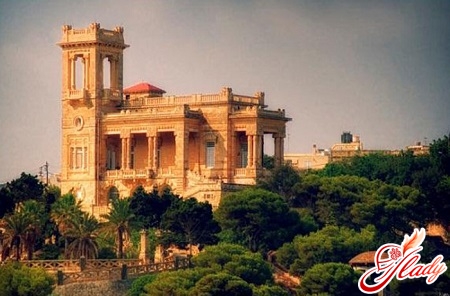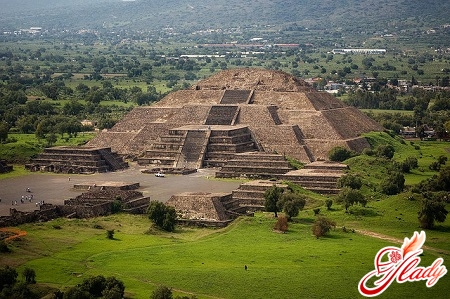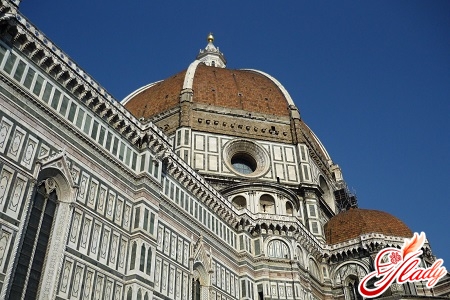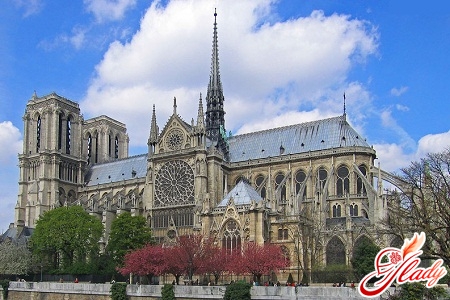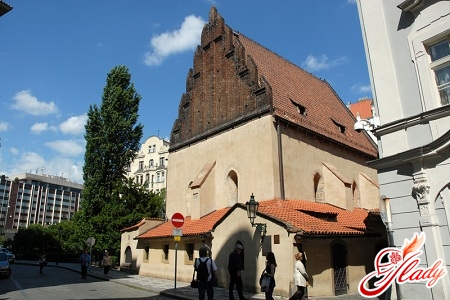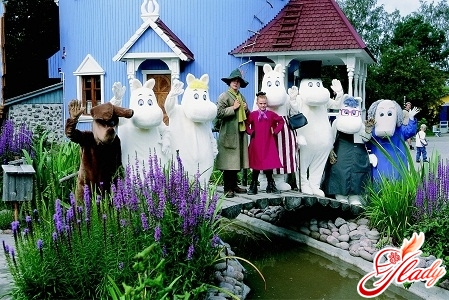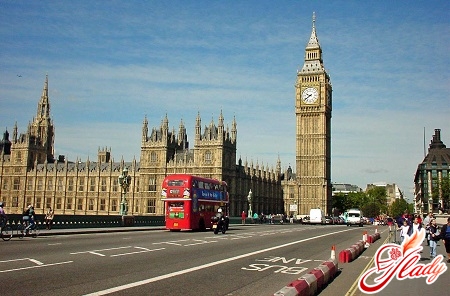
London is a dream city to visitdreams of any traveler. The British capital, spread out on the banks of the Thames, attracts tourists with its unique color, inherent only to it. London's attractions are located throughout the city, and to see at least half of them, you need to spend at least a week in the metropolis. Interesting places in London are not only historical buildings, museums, squares and picturesque gardens, but also modern skyscrapers and shopping and entertainment complexes. The capital of Great Britain has the most expensive real estate on the planet, the acquisition of which is a matter of honor for any self-respecting millionaire.
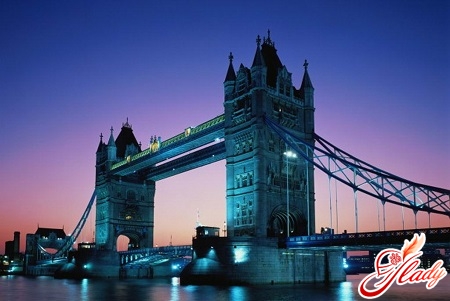
Big Ben is London's most recognizable clock
Every tourist who sets foot on London soil,First of all, he strives to see the historical buildings of the city. One of such attractions is Big Ben. The legendary clock, which has been counting the exact time for one and a half centuries, is considered the hallmark of the metropolis. The construction of the clock tower lasted during the reign of Queen Victoria, from 1837 to 1859. The height of the building is 320 feet (97 meters). The name Big Ben refers to the largest of the 6 bells of the tower, which weighs 13.5 tons. However, both Londoners and visitors to the city are accustomed to calling both the clock and the entire tower by this name. In 2012, in honor of the celebration of the 60th anniversary of the English queen on the throne, the main symbol of London was officially named Elizabeth Tower. Once upon a time, the clock tower housed a prison in which parliamentarians who disagreed with the will of the queen were placed. Today, Big Ben is one of the most popular and recognizable landmarks in London. Its chimes opened the 2012 Olympics by striking exactly 40 times, changing their exact schedule for the first time in 60 years. The clock tower is so beloved by directors and animators that they have repeatedly shown it in their films. Big Ben can be seen in scenes from the films "Mars Attacks", "The 39 Steps", "Flood", "Shanghai Knights". Scenes in which the action takes place in the famous tower can be found in the popular children's cartoons "Peter Pan", "Cars 2" and "The Last Jedi". and «101 Dalmatians».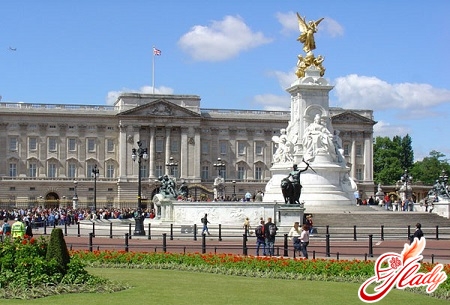
Westminster Palace and Westminster Hall
Big Ben is one of the palace towersThe Palace of Westminster is no less famous a landmark of the city. Until the beginning of the 14th century, the palace, located on the banks of the Thames, housed the residence of kings. A terrible fire in 1834 destroyed most of the old castle. Of all the rooms of the luxurious building, only Westminster Hall, which served as a hall for ceremonial receptions, and the Jewel Tower, which once housed the treasury of King Edward III, survived. In the middle of the 19th century, a new palace was built on the site of the old one. Today, it hosts sessions of the English Parliament. The modern Palace of Westminster belongs to the neo-Gothic architectural style. It has almost 1,200 rooms, which can be accessed through corridors, the total length of which is 5 kilometers. Westminster Hall deserves special attention, as it is considered one of the most valuable architectural monuments of the Middle Ages. The construction of the magnificent reception hall began at the end of the 11th century, and 300 years later it was rebuilt, with stone walls and wooden floors that were not supported by any supports. Westminster Hall survived not only the fire that destroyed the old royal castle, but also in 1941, when German bombers mercilessly destroyed the adjacent hall of the House of Commons. The area of the grandiose Westminster Hall occupies 1,800 square meters, its height reaches 28 meters. Until the end of the 19th century, the Supreme Court of England sat in this hall. It was here that Thomas More and King Charles I were sentenced to death.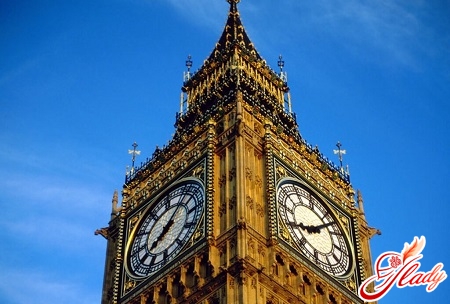
Westminster Abbey and Buckingham Palace
A little to the west of the Palace of WestminsterWestminster Abbey or St. Peter's Church rises above. This Gothic building was built intermittently for exactly 500 years (1245-1745). Throughout its history, Westminster Abbey has served and continues to serve to this day as the only place for the enthronement and burial of British monarchs. In addition to members of the royal family, famous Britons who have made their country famous throughout the world are buried in the Abbey. Charles Dickens, John Chaucer, Elizabeth Spencer and others are buried in the Poets' Corner located on the church grounds. The ashes of I. Newton and C. Darwin rest in Westminster Abbey. Inside the building, there are many memorial plaques and sculptures of famous political and cultural figures of Great Britain. The western facade is decorated with statues of martyrs of the last century. The main attractions of London include Buckingham Palace, which today houses the residence of Queen Elizabeth II. The construction of the castle began in 1703, and its original owner was the Duke of Buckingham. The palace became the main residence of the British monarchs in 1837 during the coronation of Queen Victoria. The entire territory of the apartments has more than 600 rooms. Elizabeth II lives with her husband in the northern part of the castle. When the queen is in her residence, the British flag flies over the building. When the monarch is away, Buckingham Palace offers tours for tourists, which include a visit to the throne and ballrooms, the art gallery and the royal stables. Also, guests of London can watch the ceremony of changing the guard of honor, which takes place daily at 11.30 on the square in front of the palace.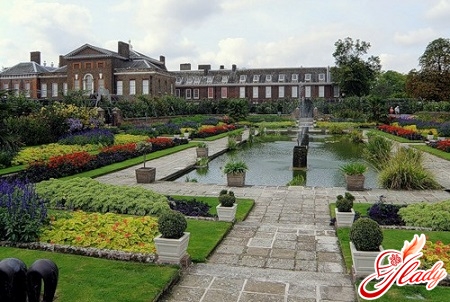
Tower Fortress and Tower Bridge
Listing the main attractionsLondon, it is impossible not to mention another symbol of the city - the Tower fortress. This ancient structure, built in 1078, is located in the historical part of the British capital. Rising above the Thames from the north, the Tower during its centuries-long existence has managed to be a defensive fortress, a residence of kings, a mint, an observatory, a place of imprisonment for prisoners and even a zoo. The Tower's prison past is impressive; not only ordinary citizens languished within its walls, but also such crowned persons as the King of Scotland James I and Duke Charles of Orleans. During World War II, German prisoners of war were held in the fortress, including Rudolf Hess. The Tower consists of several buildings, the main ones being the Armory and the museum with the English Crown Jewels. Tower Bridge got its name in honor of the Tower located nearby. The steel drawbridge connecting both banks of the Thames was opened in 1894. It is characterized by the Gothic architectural style. Tower Bridge consists of two 65-meter towers connected by a central walkway, the wings of which rise to an angle of 83 degrees to allow large ships to pass. Pedestrians can cross the bridge even when its wings are raised. For this purpose, special pedestrian paths have been constructed at a height of 44 meters, which can be reached by stairs located in the towers. Today, the upper part of Tower Bridge is used as an observation deck for tourists.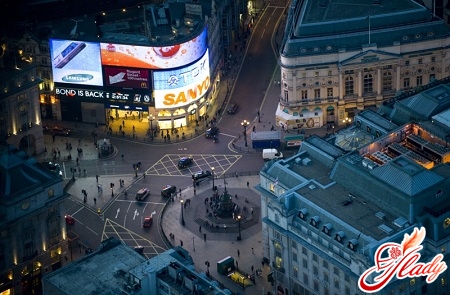
Kensington and St. James Palaces
Kensington Palace, located inKensington Gardens has been a royal residence since the 17th century. It was here that the newlyweds Prince Charles and Princess Diana settled in 1981. After their divorce in 1991, Diana of Wales remained to live in the palace with her sons. After her death, armfuls of flowers almost always lie at the gates of the palace. Today, Kensington Palace is the unofficial residence of Diana's son Prince Harry. The palace has a glorious history; Queen Victoria and the grandmother of the current monarch Elizabeth II, Queen Mary, were born within its walls. Some of the apartments of Kensington Palace are open to tourists. The luxurious halls of the castle house a museum that contains paintings by 17th-century artists and collections of clothing of British monarchs and their court servants. St. James's Palace was built in the 16th century for King Henry VIII. The castle served as the monarch's second capital residence, and it was here that Queen Mary Tudor (the Bloody) died in 1558. Her heart and internal organs are buried in the palace chapel. King Charles I lived in the castle for the last years before his execution. St. James's Palace is a red brick building. It is quite well preserved, its entrance, tapestry hall and parts of the chapel look exactly the same today as they did in the time of Mary Tudor. Elizabeth I lived in this palace until her ascension to the throne, and Princess Diana spent her days there waiting for her wedding with Charles. In St. James's Palace, the British queen traditionally receives birthday greetings every year. The ancient castle is closed and tourists are not allowed in.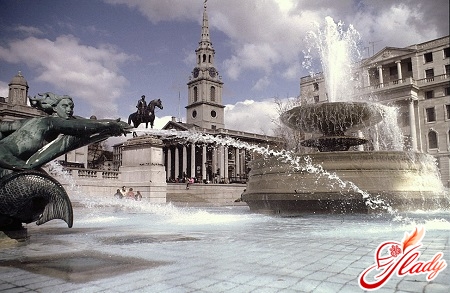
Trafalgar Square and Piccadilly Circus
London's squares and streets are not at all impressivesmaller than palaces. The famous Trafalgar Square is a landmark located in the very center of London. It houses the majestic 44-meter Nelson's Column, made of gray granite. At the top of the column stands a statue of Admiral Nelson, whose squadron inflicted a crushing defeat on the Franco-Spanish fleet during the naval battle of Trafalgar in 1805. The column is surrounded by fountains and sculptures of lions. The decoration of the square can be called the Admiralty Arch, the National Gallery and St. Martin's Church. It was on this square in 1945 that Prime Minister Churchill proclaimed the victory of the anti-Hitler coalition over Nazi Germany. Every year on the eve of the Christmas holidays, London's main Christmas tree is installed in Trafalgar Square. Piccadilly Circus has an almost 200-year history. It was founded in 1819 at the intersection of Piccadilly and Regent Street. It is home to the famous Café Royal, where English poets, writers and artists liked to gather a century ago. In 1906, the underground was opened at Piccadilly Circus. Londoners come to the square to see the fountain located there, the top of which is crowned by a statue of the naked winged ancient Greek god Anteros, armed with a bow and arrow. Piccadilly Circus was one of the first to have bright neon signs on the walls of buildings at the beginning of the last century. There is an unusual underground theatre hall, the Criterion Theatre, which can accommodate 600 spectators. The theatre gave its first performance in 1874. Of the modern buildings on the square, the most interesting is the London Cupids museum, founded in 2007.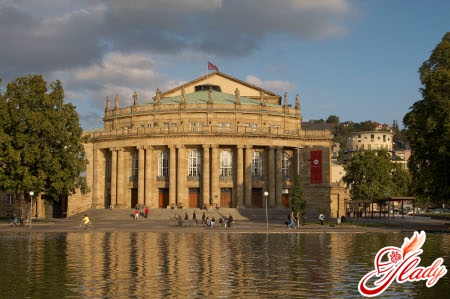
Theatres of London: The Globe and Covent Garden
The modern Globe Theatre, opened in 1997,is a copy of the building of the theater of the same name from the first half of the 17th century. It was possible to restore it thanks to archaeological finds and surviving descriptions of Shakespeare's contemporaries. The new Globe is located on Bankside Street, which is 200 km from the place where the old theater once stood. Architects and builders managed to accurately convey all the details of the legendary Shakespearean Globe, even the roof of the modern building is lined with straw. The protruding stage, inclined tiers with expensive seats and cheap standing places - everything in the Globe takes the audience back to Shakespeare's era. The roof covers only half of the theater, its middle part is in the open air. For this reason, performances are held there only in the warm season. But excursions to the Globe are held all year round. Covent Garden is known throughout the world as the main theater in which soloists of the London Royal Ballet and the London Royal Opera perform. The current building was constructed in 1858 on the site of the old theatre that had burned down two years earlier. The first performance given on the stage of the restored Covent Garden was Giacomo Meyerbeer's opera "The Huguenots". The theatre managed to survive during two world wars. At the end of the last century, it was reconstructed. Today, Covent Garden is the largest theatre in the capital of Great Britain. World-famous ballet dancers and opera tenors perform on its stage. Tickets for performances are inexpensive, so anyone can enjoy high theatrical art.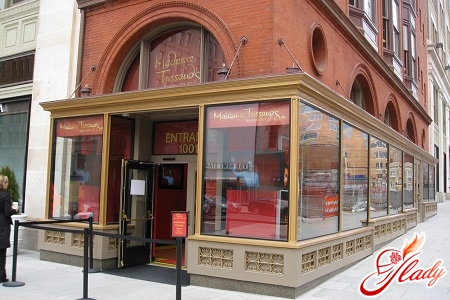
Madame Tussauds and the Sherlock Holmes Museum
All London attractions are worth visitingattention, but there is a place in the capital where you can take a photo next to show business stars, members of the royal dynasty or historical figures from different eras. To do this, you just need to visit the Madame Tussauds Museum, located on Marylebone Road. The wax figures of celebrities exhibited in the museum halls are indistinguishable from living people. In total, the London museum exhibits more than 400 exhibits, including the legendary Beatles, Kate Middleton with Prince William, Michael Jackson and other famous people. Those who like to tickle their nerves can visit the Chamber of Horrors, which contains wax copies of maniacs, thieves and executioners who lived in Great Britain over the past 5 centuries. The collection of exhibits at the Madame Tussauds Museum is constantly replenished with new figures. The London museum has branches in 14 cities around the world. The British love Sherlock Holmes so much that they even founded a museum dedicated to the famous literary detective in a house on Baker Street. The museum is located in a four-story building built in 1815. On the ground floor there is a small hall and a souvenir shop. The second floor is occupied by the living room and Sherlock Holmes' room. The floor above are the chambers of Dr. Watson and Mrs. Hudson. On the very top, fourth floor there are wax figures of characters from the books about Sherlock Holmes. The British tried to recreate the house in which the detective lived down to the smallest detail. In the museum, you can sit in Holmes' favorite armchair in front of the fireplace, see his smoking pipe and violin. The rooms are slightly disordered, as if the owners left for a minute and are about to return home to solve another high-profile crime.
Residential complex in Knightsbridge
Tourists are attracted to London not only byancient buildings, but also modern structures. One of these is the elite residential complex One Hyde Park, located in the Knightsbridge area. An architectural marvel, built of glass and reinforced concrete structures, is 4 separate towers. One Hyde Park has become famous throughout the world for its astronomically high prices for its apartments. It is here that the most expensive apartment on the planet is located, for which the owner had to pay 220 million dollars several years ago. But the rest of the apartments in the residential complex are not much cheaper. It is impossible for an ordinary person to see the luxurious decoration of the apartments in which billionaires live. But any tourist can afford to walk through the prestigious Knightsbridge area and take a photo against the backdrop of such expensive buildings. It is impossible to describe all the sights of London. There are so many of them that one can talk about them endlessly. While in the capital of Great Britain, it is worth walking along the Avenue of Stars, where the handprints of English artists are immortalized in slabs. The National Gallery of Art deserves special attention, featuring works by Rubens, Leonardo da Vinci, Caravaggio, Monet and many other world-famous artists. London's Soho district is famous for its shopping and entertainment complexes, brothels and gay clubs. When considering the main attractions in London, do not forget about the capital's public transport. The double-decker bus has long become no less a famous symbol of the metropolis than Big Ben or Buckingham Palace.




